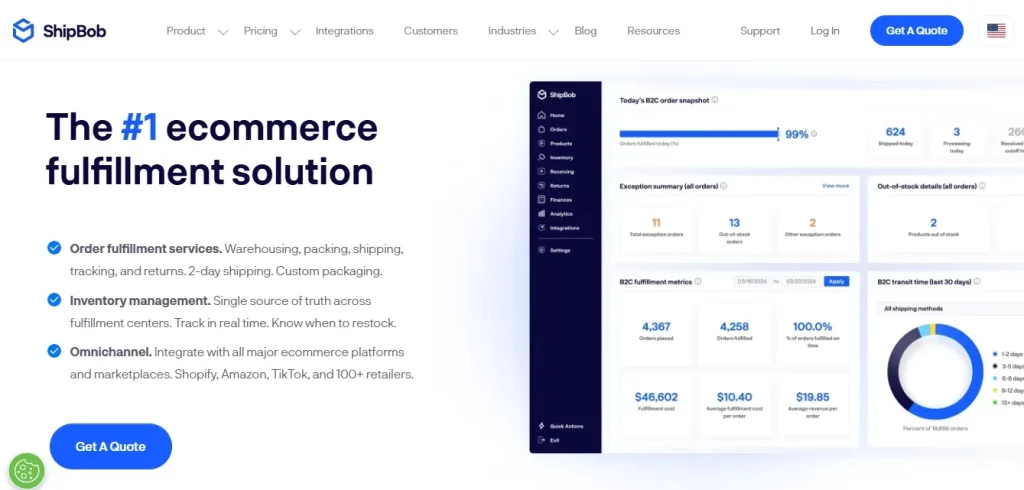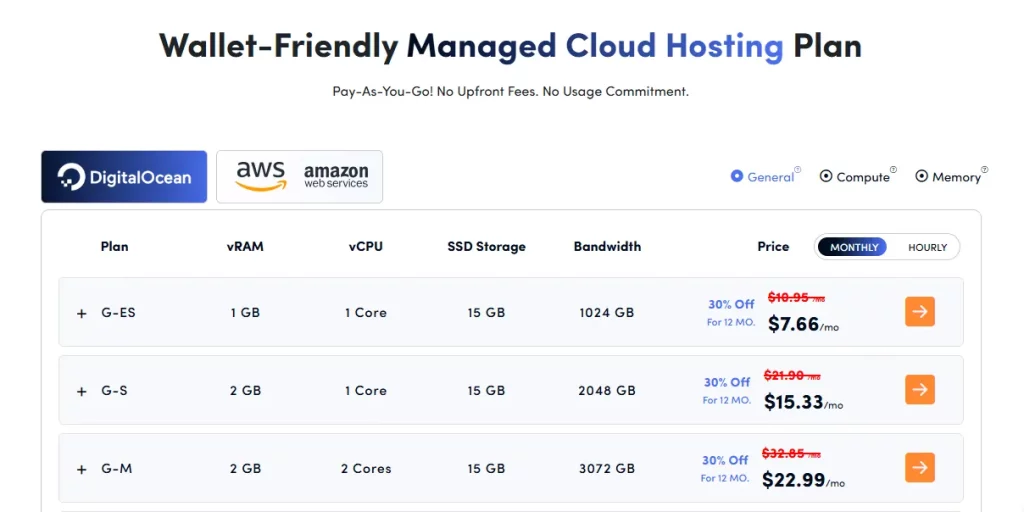
6 Effective Ecommerce Pricing Strategies to Increase Sales
Your eCommerce business’s success can be determined by its pricing strategy. Will you sacrifice revenues in order to maintain your competitiveness? Or should you increase them at the risk of losing clients to increase revenue? Finding the ideal balance is essential. An ecommerce pricing strategy is a carefully considered plan that assists in figuring out how to appropriately price goods to boost sales and profits while maintaining competitiveness. Various pricing tactics are employed in e-commerce based on competitor pricing, product demand, and product kind.
The proper pricing strategy boosts your revenue and profitability and assists you in growing your company. Product pricing might be complicated, but knowing your market and objectives can be more manageable. With platforms like Devrims, implementing these strategies becomes even easier.
This post will discuss the importance of a clear pricing plan for eCommerce success. We’ll also dissect eight tried-and-true pricing tactics that prosperous eCommerce companies employ. These tactics will assist you in identifying the best option for your company, whether your goals are cost, exclusivity, or client loyalty. This will guarantee that you maintain your competitive edge while optimizing your earnings. Moreover, having scalable ecommerce hosting ensures your site can handle pricing updates, high traffic, and smooth transactions without disruptions.
The impact of having a simple pricing plan
Every business has a different ideal e-commerce pricing plan. Additionally, a company may need to modify its approach as it expands. A basic cost-plus pricing approach, for instance, aims to make money on every purchase. Cost-plus may not be feasible in the long run, but it is effective in the initial stages of an ecommerce operation.
Costs may increase rapidly as your company expands, and the genuine cost per order and/or acquisition cost may also increase. You need a pricing strategy for ecommerce that will enable you to grow your company. E-commerce companies employ a wide range of pricing tactics that don’t negatively impact their long-term financial results.
If you keep reviewing and refining your pricing approach, you may be able to increase revenues even if your e-commerce business is already beneficial.

Make a pricing strategy that works for both your clients and your company.
An ecommerce pricing plan is frequently determined by the target market, the price range of your potential clients, and the locations where they presently purchase comparable goods. Customers’ willingness to pay for your goods will determine the best price strategy depending on several variables, including demand, competition, and brand reputation.
Who is your client?
You can better understand your potential clients by creating buyer personas. You may develop a pricing strategy that works for your company by understanding your target market’s characteristics, disposable earnings, and purchasing patterns.
For example, although some consumers are more cost-conscious, others are prepared to pay more for specific goods. Conduct thorough research before implementing an e-commerce pricing plan based exclusively on conjecture.
What makes your company stand out?
Your company must distinguish itself from millions of e-commerce firms, and the correct price plan can assist you.
For instance, the global retailer H&M sells reasonably priced, fashionable, eco-friendly, and superior apparel. Their price approach has helped them close a gap in the apparel market and become a well-known brand.

6 Best eCommerce Pricing Strategies
Testing and ongoing analysis will be needed to choose the best e-commerce pricing approach. A straightforward cost-plus pricing plan may aid in early expansion, but when expenses increase, it may eventually hurt your company.
The cost of manufacturing your goods and consumer demand are two variables affecting price decisions. These eight pricing tactics are employed by expanding e-commerce companies.
Cost-Plus Pricing Strategy
The cost-plus pricing strategy involves determining the price of a product by adding a fixed markup to the cost of producing it. This markup covers expenses like raw materials, labor, and overhead while ensuring a profit margin. Simple and easy to implement, cost-plus pricing is ideal for businesses seeking to maintain consistent profitability without complex calculations. It ensures that all costs are accounted for, making it a reliable approach for ecommerce businesses that want to avoid underpricing their products.
However, it doesn’t factor in market demand or competitor pricing, which can limit its flexibility in competitive markets.
Why Cost-Plus Pricing Works for E-commerce
Cost-plus pricing is effective for e-commerce businesses due to its simplicity and reliability. It offers a clear, straightforward method for setting prices, making it ideal for new or small businesses with limited resources. By adding a fixed markup to the cost of production, shipping, and overhead, cost-plus pricing ensures that all expenses are covered while providing a predictable profit margin. This approach simplifies pricing decisions and reduces complexity, allowing businesses to focus on other aspects of their operations.
Best Practices for Cost-Plus Pricing
To effectively utilize cost-plus pricing, it’s essential to consistently review and adjust your cost structure. Costs may vary due to fluctuations in raw material prices, changes in production processes, or shifts in shipping expenses. Regularly updating your cost data ensures that your pricing remains accurate and reflective of current expenses. By staying informed about cost changes and adjusting your prices accordingly, you can uphold your profit margins and ensure that your cost-plus pricing strategy continues to meet your business needs effectively.
Dynamic Pricing for E-commerce
Dynamic pricing for ecommerce is a flexible pricing strategy where product prices are adjusted in real-time based on factors like demand, competition, customer behavior, and market conditions. Using advanced algorithms and data analytics, this strategy allows businesses to maximize revenue by increasing prices during high-demand periods and lowering them when demand drops.
Dynamic pricing helps ecommerce companies stay competitive, optimize inventory management, and enhance profit margins. However, it requires constant monitoring and can risk customer dissatisfaction if prices fluctuate too frequently. When implemented carefully, it can significantly boost sales and conversion rates by offering the right price at the right time.
Understanding Dynamic Pricing
Dynamic pricing, sometimes referred to as surge pricing or real-time pricing, is a flexible pricing strategy that adjusts prices based on factors like demand, competition, and inventory levels. Utilizing sophisticated algorithms and data analytics, this approach helps businesses optimize revenue by setting prices that reflect current market conditions. For example, prices may rise during high-demand periods to capitalize on increased customer interest, while they may drop when demand wanes to encourage purchases and manage inventory.
Advantages of Dynamic Pricing
Dynamic pricing offers substantial benefits for e-commerce businesses by enabling real-time adjustments based on market conditions. This strategy aligns prices with fluctuating demand and supply, allowing businesses to take advantage of high-demand periods and boost sales during slower times.
Additionally, by optimizing prices according to market conditions, businesses can maximize revenue and improve profitability. This adaptability ensures that pricing strategies remain competitive and responsive to changing customer behaviors and market trends.
Tools for Implementing Dynamic Pricing
To implement dynamic pricing effectively, e-commerce businesses can leverage various tools and platforms. Pricing optimization software, AI-driven algorithms, and machine learning models are essential for analyzing real-time data and adjusting prices automatically. These tools enable businesses to streamline their pricing processes by providing accurate, data-driven insights. They help ensure that pricing strategies remain competitive and adaptable to market fluctuations. By utilizing these advanced technologies, businesses can enhance their ability to respond to changing demand, optimize revenue, and maintain an edge in a dynamic market environment.
Contact Pricing Strategy
A contact pricing strategy involves negotiating custom prices for individual customers or clients based on their specific needs, order volume, or long-term agreements. Commonly used in B2B e-commerce, this strategy allows businesses to offer tailored pricing solutions that align with the unique requirements of each client. It fosters stronger relationships by providing flexibility, ensuring that both parties reach a mutually beneficial agreement.
Contact pricing can also encourage customer loyalty, as businesses feel they are getting personalized value. However, managing multiple pricing agreements requires careful attention to detail and efficient pricing management systems to avoid discrepancies.
When to Use Contact Pricing
Contact pricing is ideal for new businesses looking to rapidly build a customer base and generate initial sales. It’s effective for creating market awareness and attracting a large number of customers. However, it’s crucial to have a well-defined plan for gradually increasing prices after the initial phase to ensure long-term profitability.
Without a clear strategy for this transition, businesses risk undermining their profit margins and potentially losing customer interest once prices rise.
Long-Term Benefits and Risks
Contact pricing offers long-term benefits such as expanded market share and enhanced customer loyalty. However, risks include challenges in raising prices later and potential perceptions of lower value among customers.
To mitigate these risks, businesses should strategically plan their pricing adjustments and effectively communicate the added value when transitioning to higher prices. This approach helps maintain customer trust and supports sustained profitability while ensuring that the initial lower prices lead to long-term success.
Premium Pricing Strategy
The premium pricing strategy involves setting higher prices to position a product or service as high-end, luxurious, or exclusive. This approach is typically used for products that offer superior quality, unique features, or a strong brand reputation.
Premium pricing attracts customers who perceive higher value and are willing to pay more for exclusivity or exceptional quality. In ecommerce, this strategy helps differentiate products from competitors and enhances brand prestige. However, to succeed with premium pricing, businesses must ensure their offerings meet customer expectations in terms of quality and experience, as unjustified high prices can deter potential buyers.
Why Premium Pricing Works for Certain E-commerce Brands
Premium pricing works for certain e-commerce brands by differentiating their products from competitors and attracting a niche audience seeking high-quality or exclusive items. This strategy strengthens brand image, as higher prices often enhance the perceived value of a product.
For brands offering unique features, superior quality, or exclusivity, premium pricing reinforces their market position, appealing to customers willing to pay more for the added prestige. It helps establish a brand’s reputation for luxury and exceptional value.
Best Practices for Premium Pricing
To successfully implement premium pricing, ensure that the product quality and customer experience justify the higher price. This includes investing in high-quality materials, offering exceptional service, and creating a premium brand experience. Consistent branding and effective communication of the value proposition are crucial for maintaining customer trust and satisfaction.
Bundle Pricing Strategy
Bundle pricing strategy involves selling multiple products or services together as a package at a reduced price compared to purchasing each item individually. This approach encourages customers to buy more by offering perceived savings and convenience. Ecommerce businesses often use bundle pricing to increase sales volume, clear inventory, and promote complementary products. It enhances the overall value proposition for customers, making them more likely to make a purchase.
However, the success of this strategy relies on bundling items that complement each other or appeal to the same target audience. Properly executed, bundle pricing can boost average order value and customer satisfaction.
How Bundle Pricing Increases Sales
Bundle pricing can significantly boost sales by increasing the average order value and promoting the purchase of additional items. Customers perceive bundles as a better deal and are often more inclined to buy when they see the perceived savings. This strategy also helps in clearing out inventory and promoting less popular products.
Effective Ways to Implement Bundle Pricing
When creating bundles, consider combining complementary products that enhance each other’s value. For example, offering a bundle of cameras with accessories like a tripod and memory card can appeal to customers seeking a complete solution. Ensure that the bundled price reflects genuine savings and provides real value to customers without eroding profit margins.
Best Practices for Optimizing Bundle Pricing
To optimize bundle pricing, analyze customer purchasing behavior and preferences to create appealing bundles. Monitor the performance of different bundles and adjust them based on sales data and customer feedback. Regularly updating bundles to reflect seasonal trends or new product releases can keep your offerings fresh and relevant.
B2B Ecommerce Pricing Strategies
B2B ecommerce pricing strategies are tailored approaches used by businesses to price products or services sold to other companies. Unlike B2C, B2B pricing often involves larger order volumes, custom pricing models, and long-term relationships. Common strategies include tiered pricing, volume-based discounts, and negotiated contracts, allowing businesses to offer flexible pricing based on order quantity, customer type, or agreement terms.
Pricing in B2B ecommerce requires a balance between maintaining profit margins and offering competitive rates that meet clients’ needs. An effective B2B pricing strategy enhances customer loyalty, strengthens partnerships, and optimizes sales by catering to the unique demands of business clients.
Key Considerations for B2B Pricing
B2B ecommerce pricing strategies differ from B2C due to the larger order volumes and long-term business relationships involved. Key considerations for B2B pricing include offering volume discounts to incentivize bulk purchases, contract-based pricing that reflects long-term commitments, and customized pricing tailored to specific client requirements.
These strategies help build strong partnerships by providing flexible pricing that aligns with each client’s unique needs, ensuring competitiveness while maintaining profitability in business-to-business transactions.
Volume-Based Pricing
Volume-based pricing offers discounts based on the quantity of products purchased. This strategy encourages bulk purchases and rewards customers for ordering larger quantities. It is particularly effective in B2B scenarios where businesses require large volumes of products.
Tiered Pricing Models
Tiered pricing models create different pricing levels based on order size, customer type, or contract length. This approach allows businesses to offer attractive rates to high-volume buyers or long-term clients while maintaining profitability. For instance, businesses can offer lower prices for customers who commit to larger orders or longer-term contracts.
Negotiation and Custom Pricing
In B2B e-commerce, custom pricing based on negotiations and specific client requirements is common. This approach allows businesses to tailor prices to individual client needs, fostering stronger relationships and providing flexibility. Negotiating pricing terms can lead to mutually beneficial agreements and enhance customer satisfaction.

Combining optimal price with effective fulfillment
Most e-commerce companies see order fulfillment as a cost center, and outsourcing forces them to increase prices. Or they realize that while providing two-day shipping can improve average order volume and reduce cart abandonment rates, it is not cost-effective.
The opposite is true for e-commerce companies collaborating with third-party logistics (3PL) firms like ShipBob. In addition to being more economical, many have discovered that outsourcing fulfillment to a 3PL has enhanced their overall logistics plan.
E-commerce businesses can provide their clients with two-day ground shipment instead of costly expedited air freight using ShipBob. Customers know they can have things delivered swiftly and reasonably, so you don’t have to worry about losing business to more significant merchants like Amazon.
Conclusion
In the ever-evolving world of e-commerce, choosing the right pricing strategy is crucial for boosting sales and conversion rates. From cost-plus and dynamic pricing to premium and bundle pricing, each strategy offers unique benefits and can be tailored to fit different business models and market conditions. By understanding and implementing these eight profitable e-commerce pricing strategies, businesses can optimize their pricing approach, enhance customer satisfaction, and achieve sustained growth. As the e-commerce landscape continues to evolve, staying adaptable and continuously evaluating your pricing strategies will be key to maintaining a competitive edge and driving long-term success.
FAQs
What pricing strategy would most help an ecommerce?
Dynamic pricing substantially benefits e-commerce businesses by enabling real-time adjustments based on market conditions.
What is the simplest pricing strategy?
Cost-plus pricing is the most straightforward type because it requires you to sum up the costs of producing your product and add a percentage.
Which pricing strategy is best?
If you’re unsure which clients are prepared to pay, competitive pricing may be a brilliant place to begin. Value-based pricing is usually a good idea.





